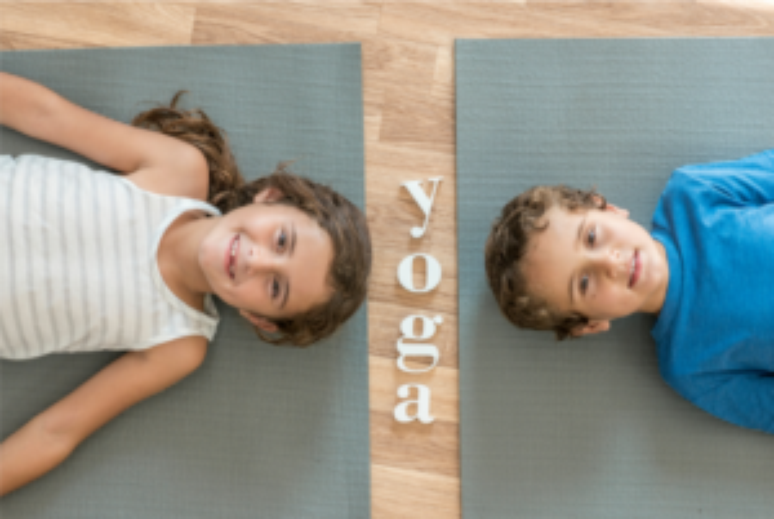The teacher highlights the main positive points in introducing the practice to the young people
In recent years, Yoga has gained an increasing number of fans. However, those who think that the practice is only for adults are wrong. Children and adolescents can greatly benefit from its exercises. The main highlight of the practice is that its positive points go far beyond the physical part. Inserting the practice of Yoga into everyday life will also be essential to ensure better mental health for young people. Want to know more about the benefits of Yoga for children and adolescents? Instructor Chandra DeRose explains all about the practice. Keep reading!
What are the main benefits of the practice?
Bringing the practice of Yoga into your daily life is extremely beneficial. This applies to both adults and children and adolescents. The positive points will act both in the body and in the mind of the little ones. Learn more!
For the body
Yoga exercises require a lot of physical dedication from its practitioners. Therefore, if practiced regularly, children and adolescents can achieve:
- tone the muscles;
- improve mobility;
- relieve postural pain;
- accelerate physical recovery;
- develop hand-eye coordination.
This way, when they start or continue with Yoga, children will be on a healthier path, which can be the gateway to new habits that are beneficial to their lives. Thus, they can minimize the chances of health problems in the future.
for the mind
As you have seen, Yoga brings a number of benefits to the physical part of its practitioners. However, its strengths are not limited to this area. “The benefits of practicing Yoga for children and adolescents go far beyond the physical aspect. In terms of the mental aspect, they will handle self-care,” emphasizes teacher Chandra DeRose. She points out that the practice is very important to improve the self-esteem of young people. In addition, it will also promote greater self-knowledge. Thus, children and adolescents will be able to know the limits of their own body. Thus, with Yoga, children will be able to:
- have more concentration;
- control anxiety;
- be more disciplined;
- expand your creativity
“They will know their emotional challenges better. They will know how to interpret what emotions they are feeling in a moment and, therefore, will be able to avoid outbursts. So this observation about this state is very interesting,” he explains.
html[data-range=”xlarge”] figure figure img.img-d15fb37e171010772835b75d6f3dc2ceznuadbyr { width: 774px; height: 519px; }HTML[data-range=”large”] figure image img.img-d15fb37e171010772835b75d6f3dc2ceznuadbyr { width: 548px; height: 367px; }HTML[data-range=”small”] figure figure img.img-d15fb37e171010772835b75d6f3dc2ceznuadbyr, html[data-range=”medium”] figure image img.img-d15fb37e171010772835b75d6f3dc2ceznuadbyr { width: 564px; height: 378px; }
Is there an ideal age to start?
Something many people may not know is that there is no minimum or ideal age to start practicing Yoga. Your exercises can bring benefits no matter what stage of life you start with. It is also possible to find professionals who specialize in exercises with children, always with mothers or fathers. In these cases the focus of the lessons is to foster greater harmony between the two, working on the themes of affection, movement and the perception of the moment. However, you need to find a class that matches your child’s level. “The advice is to find a professional specialized in the age group you are looking for”, underlines the teacher. This way the results will be even better.
How often should children and adolescents practice Yoga?
As with age, there is no set or default frequency for practice. “The ideal frequency is one that fits into your routine,” says Chandra DeRose. However, it is always important to emphasize that the benefits of Yoga come as the practice becomes more regular, just like in other sports. Therefore, a tip for children and teenagers is not to limit learning to class time. Therefore, it is interesting to try to maintain an exercise routine at home. This means taking a few moments of the day to practice some techniques and insert some dose of practice. This will make it easier to become a habit. “Yoga is much more than the moment you sit down to practice. It’s when you go about your activities with awareness. Yoga is the state of presence in every moment of your life,” the teacher reiterates. Furthermore, Yoga can also be practiced together with other sports, being an excellent ally for the development of children and adolescents. “When practiced first, it serves to prepare the body for that new sport. In the post, Yoga will help in physical recovery,” explains Chandra.
What should be considered before starting the practice of Yoga?
As you have seen, regular Yoga practice will bring a number of benefits to the body and mind of children and adolescents. Therefore, if you are interested in including this activity in your children’s daily life, you must consider the following points:
The interests of children and adolescents
Before starting the practice, it is very important to listen to the child. Since she will be new to the routine, there is no way of knowing whether or not she will enjoy the practice. Therefore, it is important to negotiate with her. Therefore, the ideal is to start with one or two classes to understand the adaptation of children and adolescents. If he likes it, it will be possible to continue with the practice and, consequently, to obtain better results.
The specialty of the professional
It is also important to evaluate the specialty of the professional in question. As you have seen, there are also those who work with children. Therefore, it is necessary to understand the age range with which the teacher works and which didactics she uses. “In the former, parents can get together, observe the teacher’s teaching and see if their children are adapting to it,” says the teacher. Furthermore, it is essential to have trained and qualified professionals. “We develop very deep issues of being human. So it’s important to be a professional who can deal with children and adolescents in the maturing stage,” concludes Chandra DeRose. Therefore, regular Yoga practice will bring a number of benefits to children and adolescents, both physically and mentally. Therefore, the sooner they can start, the faster positive results can emerge. See also: Dealing with Overwhelm: Tips for Moms
*Chandra de Rose began her yoga journey as a child. In 2001, at the age of 18, she graduated in yoga and, since then, she has been a professional dedicated to clearly transmitting the techniques to her practitioners, having her own style of conducting the practices, based on her life story and in the its development within this philosophy. Her goal is to provide practical tools for concentration, breathing and meditation, thus increasing vitality and helping to manage stress and relieve daily pain and tension.
Source: Terra
Ben Stock is a lifestyle journalist and author at Gossipify. He writes about topics such as health, wellness, travel, food and home decor. He provides practical advice and inspiration to improve well-being, keeps readers up to date with latest lifestyle news and trends, known for his engaging writing style, in-depth analysis and unique perspectives.








